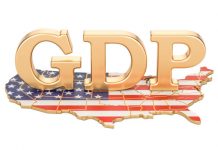Markets
More dollar strength pulled EUR/USD to a first 1.05-quote since October 2023, but that level triggered some rebound action higher. It’s only a matter of time though for a test (and potential) break of the 1.0448 range bottom in place since 2023. Next support levels stand at 1.0406 and 1.0201 which are respectively 50% and 62% retracement on EUR/USD’s bounce from 0.9536 to 1.1276 in 2022-2023. The trade-weighted dollar touched 107 with the 2023-top at 107.35 being the near-term technical reference. USD/JPY changes hands at 156, making way to the 160 potential intervention area. The Ministry of Finance conducted FX purchases both in April and in July after passing this threshold. Fed governor Kugler – labelled amongst the most dovish FOMC members together with governor Cook, Chicago Fed Goolsbee and Philly Fed Harker on Bloomberg’s hawk-dove spectrometer – said that the Fed must focus on both inflation and jobs goals. “If any risks arise that stall progress or reaccelerate inflation, it would be appropriate to pause our policy rate cuts,” she said. “But if the labor market slows down suddenly, it would be appropriate to continue to gradually reduce the policy rate.” Kugler’s comments seem to be skewing to the upside inflation risks (stubborn housing inflation and high inflation in certain goods and services) which obviously carries some weight given her more dovish status. US eco data played second fiddle with weekly jobless claims and producer prices squeezed in between yesterday’s CPI data and tomorrow’s retail sales. Weekly claims continue to hover at low levels (217k from 221k). Headline PPI rose by 0.2% M/M as expected, following an upwardly revised 0.1% in September. Core PPI excluding volatile food and energy categories climbed 0.3% M/M and 3.1% Y/Y (vs consensus of +0.2% M/M and 3% Y/Y). Both services costs and goods prices rose by 0.3% in October. The data triggered a tick lower in US Treasuries, but the magnitude was smaller than the past days’ declines and like in the dollar was met with a countermove following one-way traffic. Daily changes on the US yield curve currently range between -5.9 bps and -3.6 bps with the wings of the curve outperforming the belly. German Bunds outperformed again, especially at the front end of the curve (2-yr yield -5.6 bps). We retain some interesting comments coming from Minutes of the October ECB meeting, pointing out that the disinflationary process was gathering steam with initials improvements in services as well. The ECB stance might approach neutral levels earlier than thought, cementing at least another 25 bps rate cut in December.
News & Views
In its November monthly report the International Energy Agency (IEA) forecasts world oil demand to rise by 920k b/d this year and just shy of an additional 1m b/d in 2025 (2024 102.8 mb/d, 2025 103.8 mb/d). The slowdown in growth from recent years reflects the end of the post-pandemic pent-up demand and below-par underlying global economic conditions, as well as clean energy technology deployment, the IEA assesses. This slowdown in growth compares to a growth of close to 2m b/d last year and 1.2 m b/d on average over the 2000-2019 period. China’s marked slowdown has been the main drag on demand, with 2024 growth to average just a tenth of the 1.4m b/d increase in 2023. Regarding the demand-supply balance, the IEA expects ongoing healthy supply growth. It expects non-OPEC supply growth at 1.5m b/d this year and next year, mainly driven by US production alongside higher output from Canada, Gyana and Argentina. OPEC+ postponed a scheduled increase of 180k b/d earlier this month and will reassess its policy at a meeting early December. However, even in a scenario where OPEC+ cuts remain in place, IEA expects global supply to exceed demand by more than 1m b/d next year.
Polish GDP growth unexpectedly contracted by 0.2% Q/Q in Q3, bringing the Y/Y-growth to 2.7%. Q2 growth was strong at 1.2% Q/Q and 3.2% Y/Y. The consensus expected Q3 growth at 0.3% Q/Q. The office didn’t release any details yet. A more in depth/detail release will be published on November 28. Poor retail sales data suggest a weak performance of private consumption. The National Bank of Poland recently indicated that uncertainty on the path of inflation probably will provide little to no room to cut the policy rate before March next year. MPC member Wnorowski today reconfirmed that the NBP could start to discuss rate cuts in Q1. Even so, the Polish 2-y yield today declined slightly more than regional peers (- 8 bps to 4.98%). The zloty held strong as EUR/PLN eased from near 4.3325.













